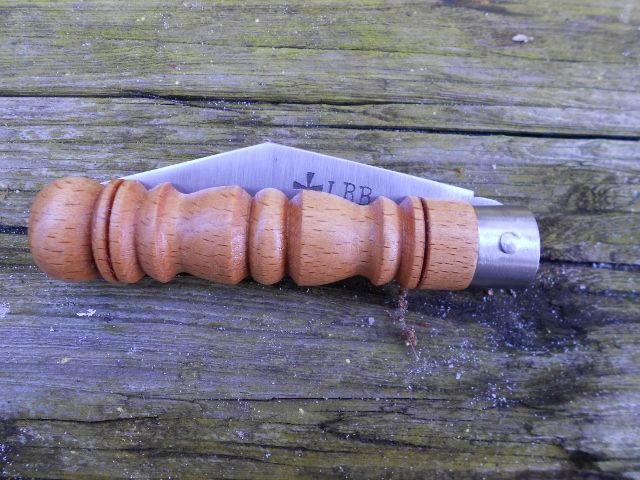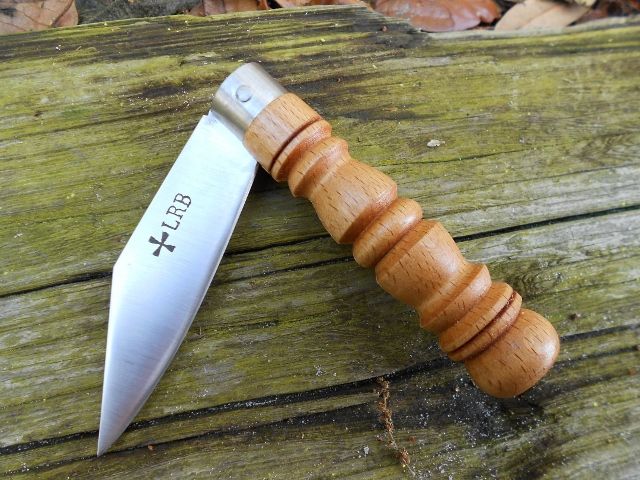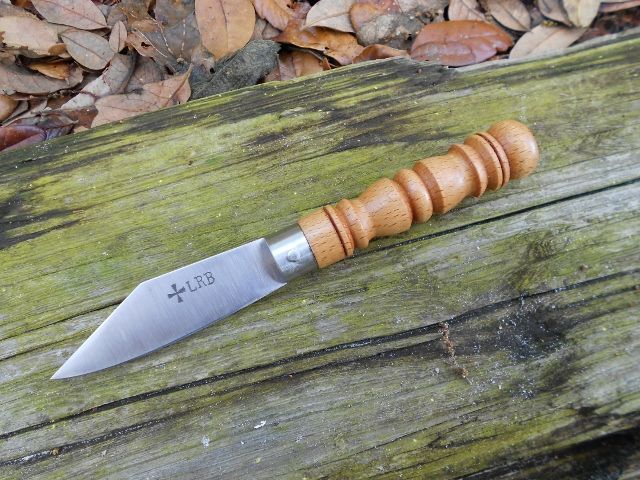- Joined
- Aug 25, 2003
- Messages
- 6,524
- Reaction score
- 1,496
Just finished today. Blade is 3 3/8" 01 steel. Grip is turned from European Beechwood 4" long, and about 7/8" at the butt, tapering to an 11/16" mild steel ferrule with 1/8" steel pivot pin of W-2 steel, hammer peened. Grip is finished with 3 coats of MinWax Antique Oil Finish. Hope you enjoy a look.











